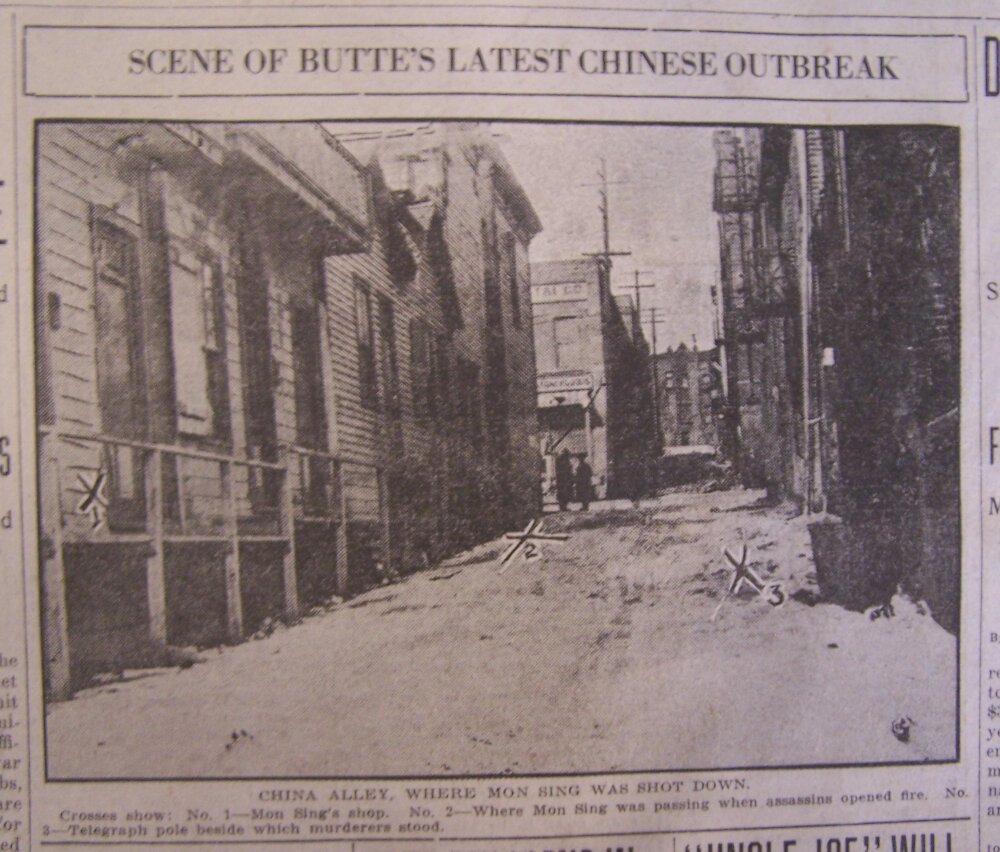Butte, America’s Story Episode 252 - Tong Wars
Welcome to Butte, America’s Story. I’m your host, Dick Gibson.
Chinese tongs were originally benevolent and protective organizations, usually based on family and business relationships. They also evolved to have elements of secret societies, organized crime, and Mafia-like gangs.
When disputes erupted over business territorial rights or perceived problems between families, an all-out tong war could develop. The most significant tong war in Butte, in 1921-1922, appears to have spread to Chinatowns across the nation.
The problem may have begun over a business territorial dispute. The well-established Hip Sing Tong opposed entry into Butte affairs by the rival Bing Kung Tong, but the conflict may have arisen because of the machinations of Chong Sing who was reportedly organizing a group of businessmen, the Canton Club, which would be independent of the Hip Sing Tong. In any case, Chong Sing was shot and killed outside his poultry shop at 222 South Wyoming Street on October 13, 1921.
Police nearby quickly apprehended and charged Chin Sing, who despite the similarity of his name was not related to Chong Sing and was part of the rival Hip Sing tong. Chin Sing was freed after a bartered agreement between the two tongs, reportedly a payoff worth $30,000. Chong’s murder came less than a year after two unsolved Chinese killings, Chin Sue Sing at the Hong Kong Café at 114 South Wyoming in December 1920, and Hum Wee at the Wyoming House at 103 South Wyoming in January 1921. It was thought that those killings were not tong related.
The war expanded dramatically in February 1922, when Mong Sen, a member of the Bing Kung Tong and the administrator of Chong Sing’s estate, was shot six times at his herbal shop at 207 China Alley, south of Mercury and immediately west of Main Street. Mong had lived in Butte for 40 years and was a respected member of the Chinese community, and his killing touched off a period of fear throughout Butte’s Chinatown and beyond. Chinese residents refused to go out, and laundries shut down. The Butte Miner reported on February 17, 1922, under the headline "All Butte in Chinese Tong War" that "men may go shirtless or sockless and clean waists for the women folks will be an utter impossibility for a week or more."
Lum Mon, another Bing Kung, was shot where he stood in the Wah Chong Tai Mercantile, part of today’s Mai Wah Museum, on April 20, 1922. Lum had reportedly betrayed his fellow tong members to the Hip Sing, and the killing was inferred to be a revenge murder by his own associates.
The dispute spread to Chinese centers in Seattle, San Francisco, Chicago, and elsewhere, resulting in at least 27 deaths nationwide. A truce between the two tongs was announced in June 1922, and Butte’s Chinatown returned to normal.
As writer Edwin Dobb has said, "Like Concord, Gettysburg, and Wounded Knee, Butte is one of the places America came from." Join us next time for more of Butte, America’s Story.
